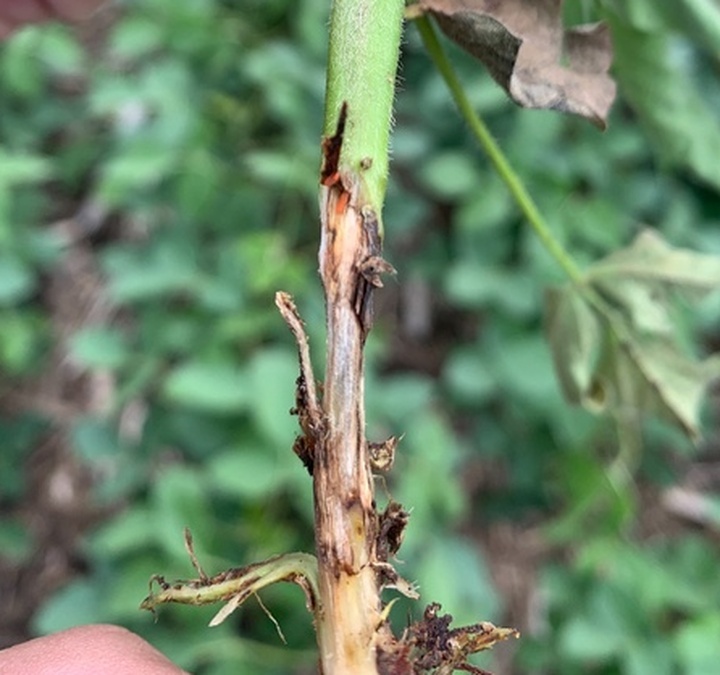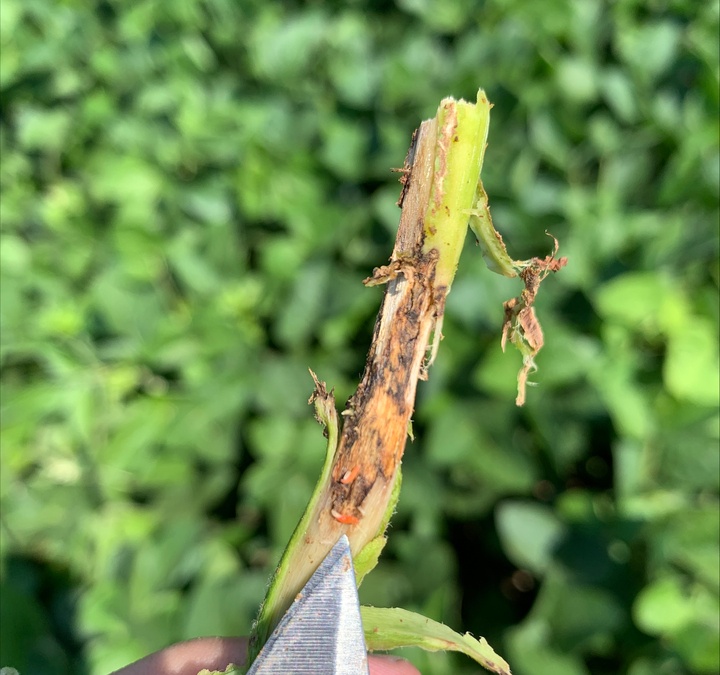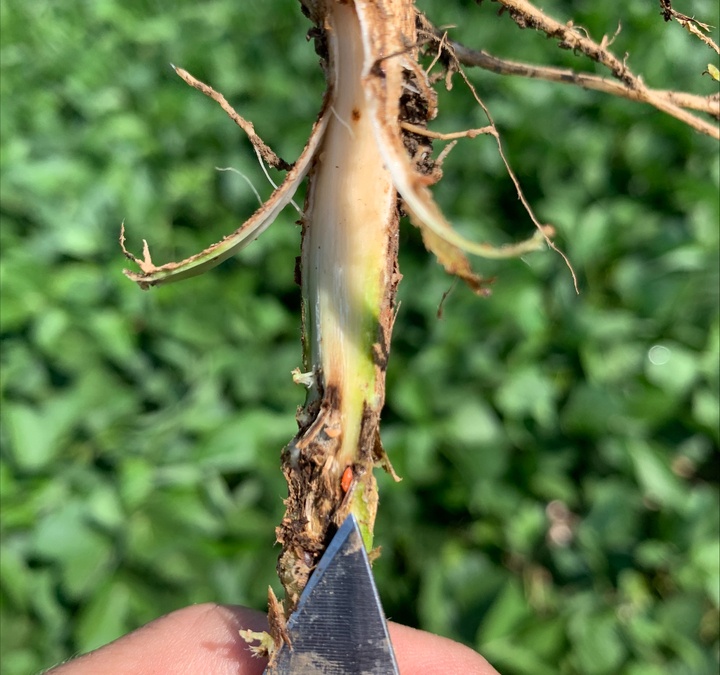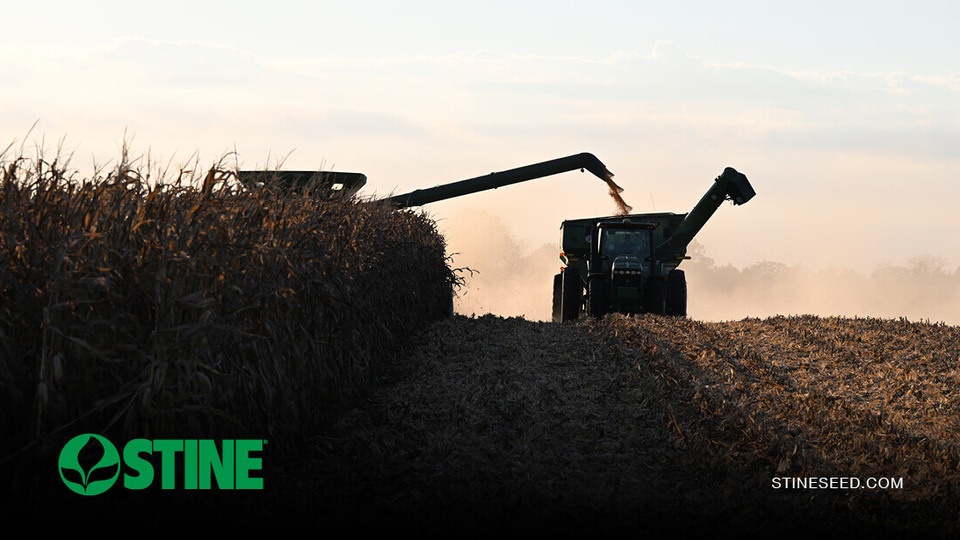Soybean gall midge numbers are on the rise throughout the Midwest. The pest was first documented in the U.S. in 2011 in Nebraska and has since spread to other parts of the country, including Iowa, Minnesota, Missouri and South Dakota. In a recent episode of the Stine Seedcast, Stine· field agronomist Daniel Greblunas discussed soybean gall midge and highlighted how to detect it in fields this summer.
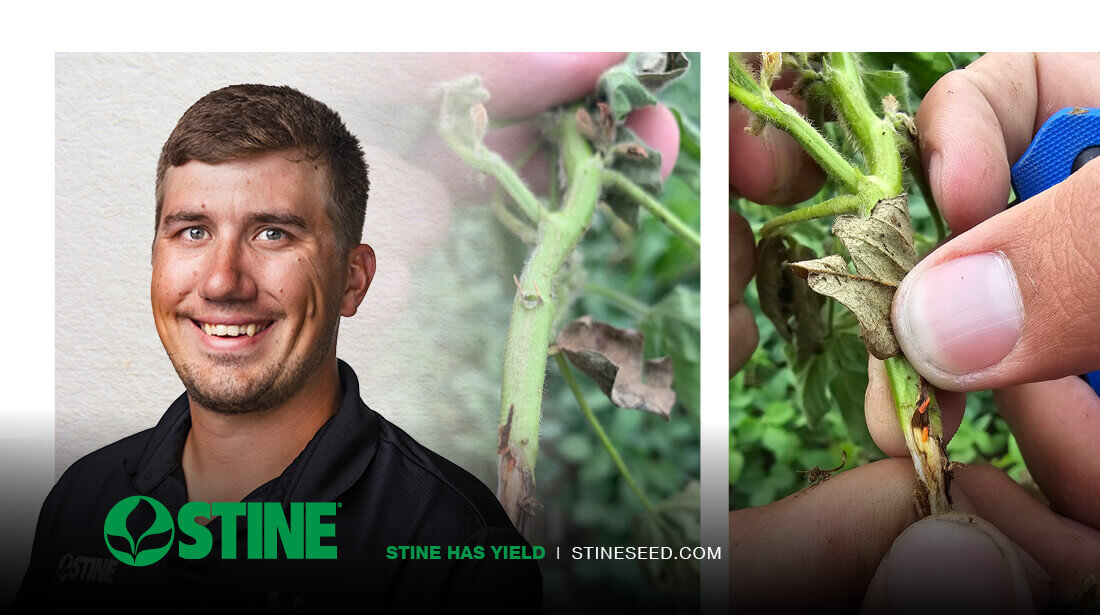
“I fear we’re going to see an influx in soybean gall midge in the future,” says Greblunas. “After 2018, it started to take off, and I run into the pest more frequently each passing year in my region of Nebraska and Kansas.”
Identification
According to Greblunas, soybean gall midge primarily affects end rows in soybean fields, but they can work their way in about 30 feet on either side in some instances. He sees more incidence in fields bordering cornfields, but they can also overwinter in tree lines and prairie strips.
“They overwinter in soybean-adjacent fields as larvae and then fly over as adults to lay eggs on new soybean plants along the edges of the fields. As larvae emerge, they feed on the stems, which stops the uptake of water and other nutrients vital to the plant.”
Daniel Greblunas, Stine• field agronomist
The Crop Protection Network further explains soybean gall midge larvae — often white to orange in appearance —pupate in the soil, then adults emerge in early spring. Adult “midges,” which take on a mosquito- or fly-like appearance, then fly to neighboring soybean fields to lay eggs in “wounds or natural openings” on the bottom half of the stems and base of the plants. Once the eggs hatch, the larvae feed on the stems until they reach maturity, then they fall off the plant to repeat the overwintering process.
If you suspect soybean gall midge in your fields, larvae can be found by tearing back the stem of the plant. Affected plants will appear wilted or dying back, but the damage can sometimes be misattributed.
“Unfortunately, growers sometimes mistake the issue with other field problems, like an area where they ran through with the grain cart or where there’s damage because of compaction,” says Greblunas. “It’s important to dig deeper to get to the root of the problem.”
Management
At this time, soybean gall midge management strategies are few, if any.
“Nobody has come out and said there’s a true way to combat them,” says Greblunas. "You can try cultivating around the V2 growth stage, but that won't work in a no-till situation."
Greblunas also notes there are studies where insecticides yielded no real results. That said, if growers do test insecticides, they should only be applied on field edges, typically up to 120 ft. Other strategies he’s heard of include burning ditches every year or doing multiple insecticide applications, but neither has proven effective. Cultivating fields at V2 and switching to late planting, around the end of May, have been a somewhat viable option for management, he adds.
“Unfortunately, by the time you experience the problem, they’re already feeding on the plant. Looking ahead, the only thing that has proven effective is delaying planting.”
Daniel Greblunas, Stine• field agronomist
Experts from the Crop Protection Network note further studies are underway to determine other management practices that may be useful in controlling the population.
“Even with crop rotation, when you return to soybeans two years down the road, soybean gall midge will still be there,” says Greblunas. “I’ve seen extreme situations with 90% plant loss in fields on the edge; it’s definitely a pest to take seriously.”
To learn more about soybean gall midge and how Stine’s research trials are testing different management strategies for the pest, listen to the latest episode of the Stine Seedcast.
Related Articles
-

Understanding Stine’s enhanced oil profile soybeans
December 2025 in Agronomy
-

Soil sampling sets the stage for spring
November 2025 in Agronomy
-

Corn production growth paves way for more high-performing Stine® hybrids
November 2025 in Agronomy
-

Stine harvest roundup: Part 2
October 2025 in Agronomy
